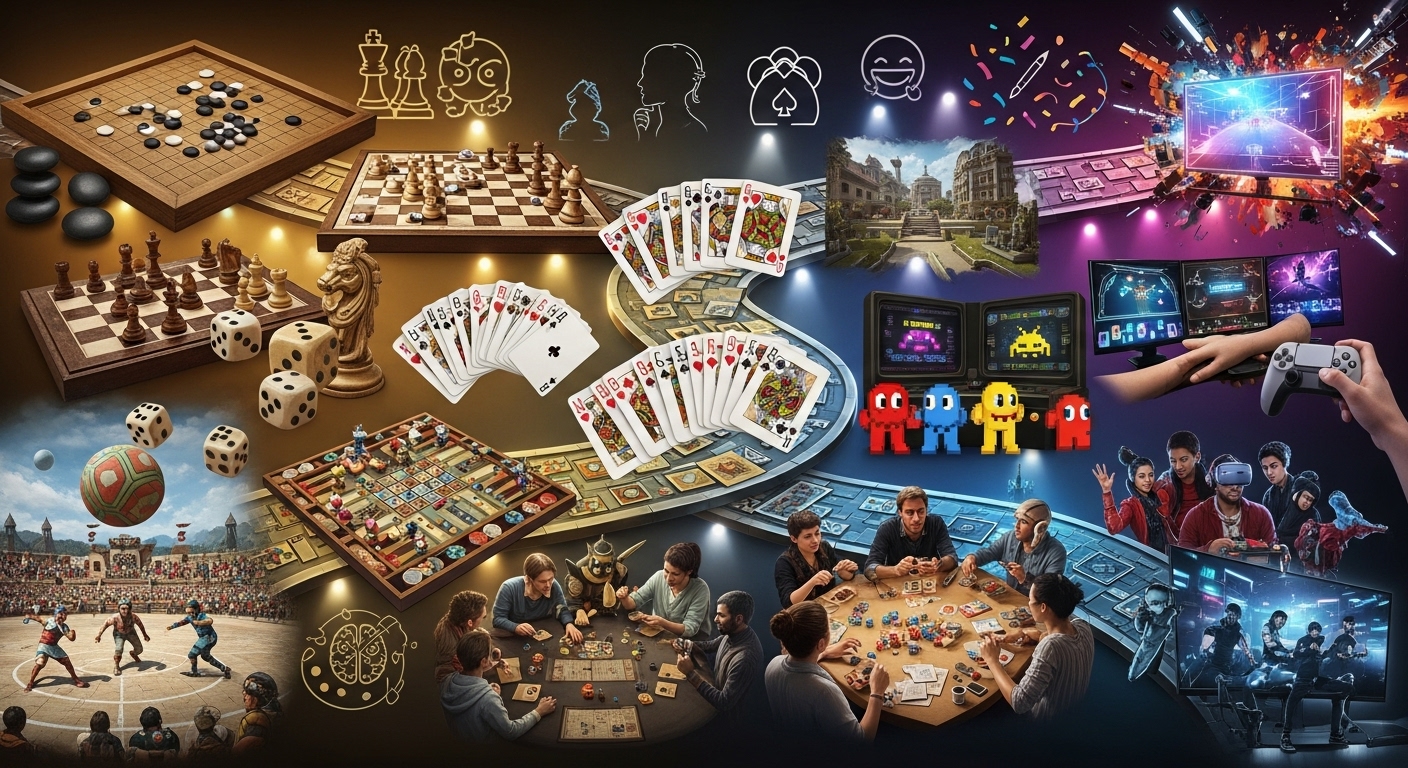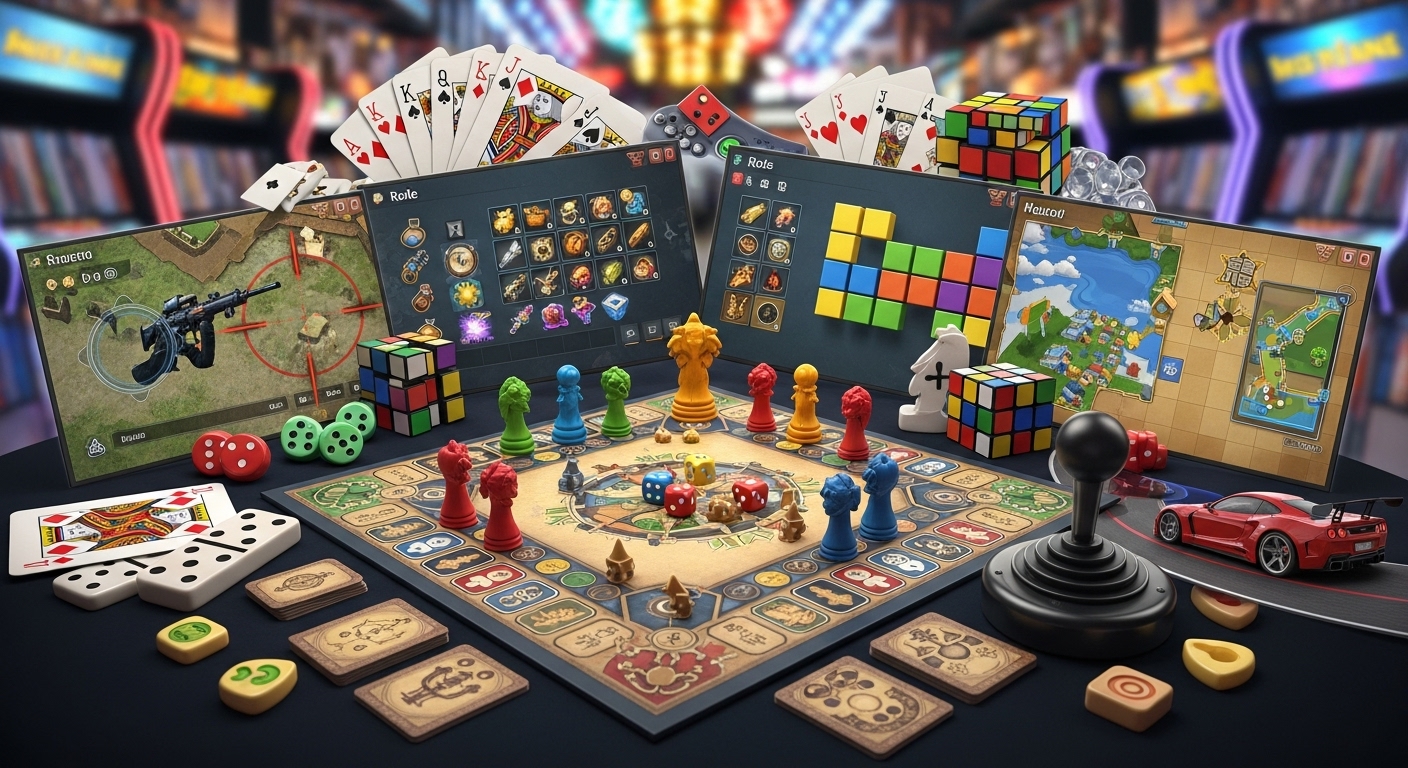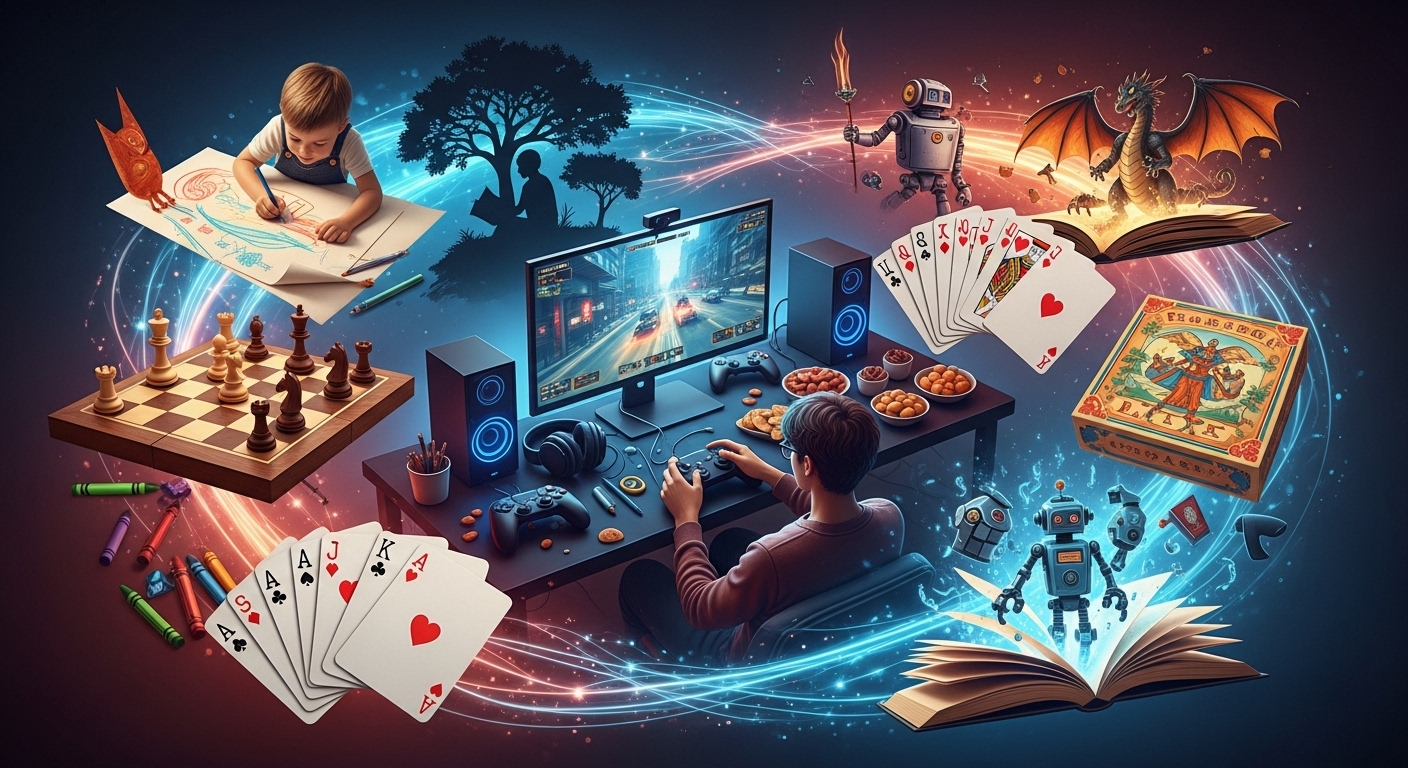Introduction to the World of Games
Games have been an essential part of human civilization since ancient times. Whether in the form of traditional board games, outdoor physical sports, or modern digital video games, they have always provided entertainment, challenge, and a way for people to connect. The world of games is vast, stretching across cultures, generations, and technologies. From the early days of chess and dice to today’s immersive virtual reality adventures, games have evolved into one of the most powerful mediums of expression and interaction.
The modern concept of gaming is not limited to just playing for fun. It has become a culture, a profession, a learning tool, and even a form of art. Millions of people around the world identify as gamers, and many more engage in games casually. The purpose of this blog is to explore how games have evolved, their cultural and social importance, their psychological effects, and their future potential in shaping human creativity and innovation.
The Historical Evolution of Games
The earliest forms of games date back thousands of years. Ancient civilizations like Egypt, Mesopotamia, and China developed games that combined elements of strategy, luck, and skill. Games such as Senet in Egypt or Go in China were not just for leisure; they reflected social status, intellectual prowess, and sometimes even religious significance.
As societies advanced, so did the nature of their games. Board games became a common way to engage the mind, while physical sports tested human endurance and teamwork. The Olympic Games of ancient Greece, for example, were a celebration of physical skill, honor, and national pride.
The invention of cards in China during the Tang Dynasty and their later spread to Europe marked another milestone. These games introduced new forms of entertainment that combined chance with strategy. By the 19th century, games began to take on more structured and commercial forms. Monopoly, Scrabble, and chess tournaments became household names, fostering friendly competition and intellectual challenge.
However, the true revolution in gaming began in the 20th century with the arrival of computers and digital technology. The creation of early arcade machines and home consoles such as Atari and Nintendo transformed gaming into a global phenomenon. What was once a niche pastime became an integral part of modern culture.
The Rise of Video Games
The birth of video games in the 1970s marked the beginning of a new era. The simplicity of Pong or Space Invaders captured the imagination of millions. These games introduced an entirely new way of interacting with technology, merging creativity with logic and reflexes.
As technology advanced, so did the complexity of video games. The 1980s and 1990s were considered the golden age of gaming, with titles like Super Mario Bros, The Legend of Zelda, Sonic the Hedgehog, and Final Fantasy shaping the identity of generations. These games not only entertained but also told stories, created worlds, and introduced players to new forms of problem-solving.
By the 2000s, gaming had become more than a hobby—it became a massive industry. The introduction of online multiplayer gaming connected people across the globe. Players could now compete, cooperate, and communicate in real time. Franchises like Call of Duty, World of Warcraft, and Halo dominated the landscape, while independent developers began to innovate with smaller, more creative projects.
Today, gaming spans genres and platforms. Mobile gaming, virtual reality, cloud gaming, and augmented reality have transformed the way people play. The line between the physical and virtual worlds continues to blur, making gaming one of the most dynamic industries in the world.
The Psychology of Gaming
Games appeal to the human mind on multiple levels. They provide stimulation, reward, and a sense of accomplishment. Psychologically, games satisfy several fundamental needs: autonomy, competence, and relatedness. Players enjoy the freedom to make choices, master challenges, and connect with others.
One of the reasons gaming is so engaging is because it taps into the brain’s reward system. Achievements, progress bars, and levels trigger dopamine releases, creating feelings of satisfaction and motivation. This mechanism explains why players can spend hours immersed in a game, striving to complete tasks and reach new goals.
Beyond entertainment, games have proven therapeutic value. Serious games and gamification have been used in education, mental health, and professional training. Simulation games, for instance, allow doctors, pilots, and soldiers to practice in safe, controlled environments. Games designed for mental wellness help reduce stress, anxiety, and depression.
However, the psychology of gaming also has a darker side. Excessive gaming can lead to addiction, social isolation, and disrupted sleep patterns. The key lies in balance and awareness—understanding when gaming enhances life and when it begins to control it.
Games as a Form of Art
Modern games are not merely about winning or losing; they are works of art. The combination of storytelling, visual design, music, and interactivity creates experiences that rival literature and cinema. Games like The Last of Us, Journey, and Red Dead Redemption showcase deep emotional narratives that resonate with players on a human level.
Artistic direction in games has evolved into a specialized craft. Designers, writers, animators, and composers collaborate to create immersive worlds that feel alive. A game’s visual style, soundscape, and narrative structure can evoke emotions and convey themes just as effectively as a movie or novel.
Moreover, games allow players to participate in the story rather than merely observe it. This interactivity makes the medium unique. The player’s choices shape the outcome, creating a sense of agency and personal connection. The artistry of game design lies not just in its visuals but in how it makes the player feel and think.
The Role of Technology in Shaping Games
The advancement of technology has been the driving force behind gaming’s evolution. Graphics engines, artificial intelligence, and physics simulations have allowed developers to create worlds of astonishing realism and complexity. Modern consoles and PCs can render lifelike characters, vast landscapes, and intricate details that were once unimaginable.
Online connectivity has expanded the social aspect of gaming. Players from different continents can join the same match, form alliances, and share experiences. Virtual reality and augmented reality are redefining immersion, allowing players to step inside the game world itself. Cloud gaming has eliminated hardware barriers, enabling people to play high-end titles on any device with an internet connection.
Artificial intelligence has also transformed gameplay. Enemies in games now adapt to player behavior, making experiences more challenging and unpredictable. Procedural generation allows developers to create endless content, ensuring no two playthroughs are the same.
As technology continues to progress, the possibilities are limitless. The integration of AI-driven storytelling, brain-computer interfaces, and fully immersive environments could make future games indistinguishable from reality.
The Social and Cultural Impact of Games
Games have become a powerful cultural force. They shape trends, influence media, and bring communities together. Esports, or competitive gaming, has emerged as a global phenomenon, with professional players, massive tournaments, and millions of viewers. What was once considered a pastime is now a career path, with sponsorships, training camps, and international competitions.
Social games like Minecraft and Roblox foster creativity and collaboration among younger audiences. These platforms act as digital playgrounds where imagination knows no limits. Meanwhile, narrative-driven games explore complex themes such as morality, identity, and loss, pushing the boundaries of storytelling.
Games also serve as bridges between cultures. Players from different countries and backgrounds interact, learn, and exchange ideas. Language barriers fade as shared experiences in gaming worlds create universal bonds. This sense of global community is one of the most remarkable aspects of modern gaming culture.
Gaming and Education
One of the most exciting developments in recent years is the use of games for education. Educational games and gamified learning systems have transformed classrooms, making learning interactive and enjoyable. Instead of passive memorization, students engage in problem-solving, experimentation, and exploration.
Games like Minecraft: Education Edition or Kerbal Space Program teach physics, engineering, and teamwork. Strategy games develop critical thinking and decision-making skills. Even simple games can improve memory, coordination, and focus.
Teachers and institutions increasingly recognize that gaming can be a powerful tool for learning. By combining fun with knowledge, games make education more engaging and effective.
Challenges in the Gaming Industry
Despite its success, the gaming industry faces numerous challenges. Issues such as crunch culture, representation, and online toxicity continue to be discussed. Game developers often face intense deadlines and stressful work conditions, leading to burnout. There is also a growing need for diversity in both game characters and creators to reflect the global audience.
Online harassment and toxic behavior remain serious problems in multiplayer environments. Creating inclusive, respectful spaces where everyone feels safe is crucial for the future of gaming. Moreover, balancing monetization strategies with player satisfaction is an ongoing challenge, as excessive microtransactions can harm the gaming experience.
The Future of Gaming
The future of gaming is boundless. As technology advances, games will become more immersive, intelligent, and accessible. Virtual reality will evolve into full sensory experiences, while artificial intelligence will create dynamic stories that adapt in real time. Cloud-based gaming will make high-quality experiences available to anyone, anywhere.
In the long term, gaming could merge with other industries such as film, education, and healthcare. Interactive narratives may replace traditional movies, while therapeutic games could help treat mental and physical conditions. The rise of metaverse-style virtual worlds will redefine how people socialize, work, and play.
The concept of a game may expand beyond entertainment to become a framework for life itself—where learning, creativity, and interaction all take place in playful, engaging environments.
Conclusion: The Power and Promise of Games
Games have come a long way from ancient boards and cards to the digital realms of today. They have evolved into a universal language that transcends culture, age, and technology. Games entertain, educate, and inspire. They challenge the mind, strengthen relationships, and spark creativity.
As we move further into the digital age, games will continue to shape how we experience the world. They are not just a form of leisure but a reflection of humanity’s endless curiosity and imagination. Whether on a playground, a board, or a virtual battlefield, the essence of gaming remains the same—the joy of discovery, the thrill of challenge, and the connection between people.
The world of games is vast, ever-changing, and full of possibilities. It represents not just what we play but who we are and what we can become.




